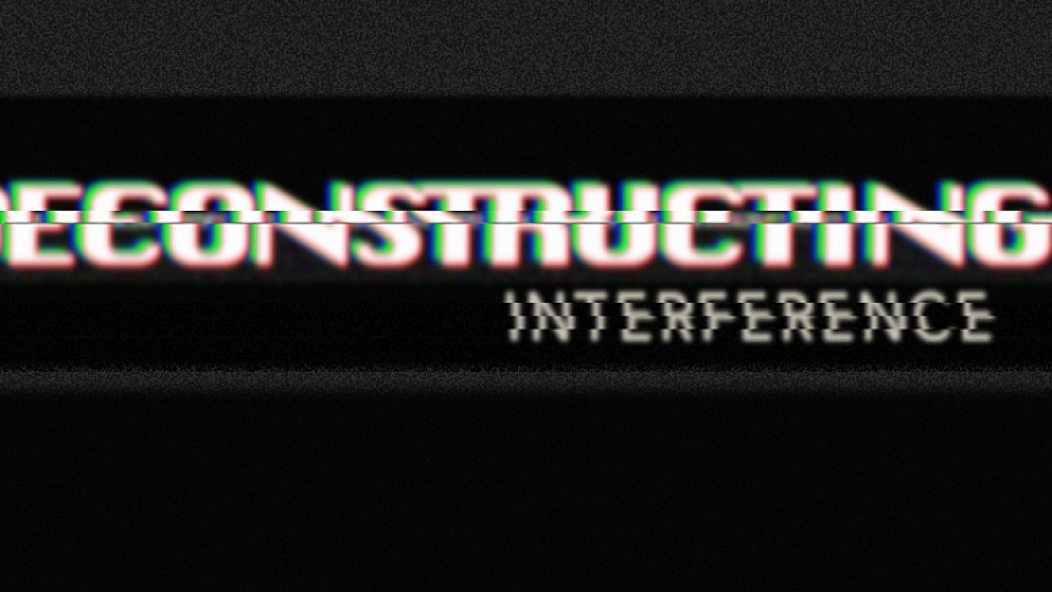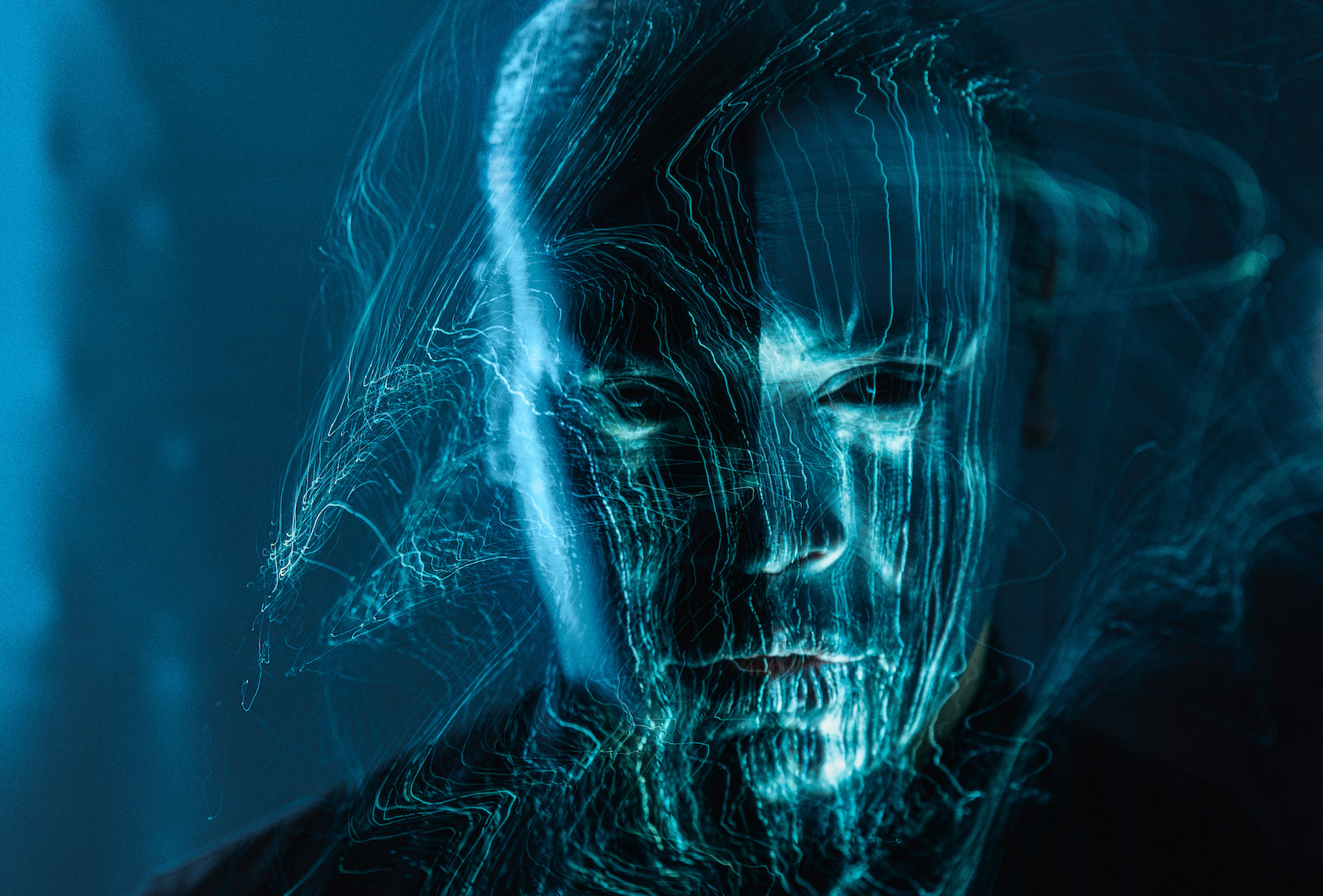
Deconstructing Interference #18

…
It has been a while and the last few months have been packed with some excellent releases. In this installment, I will not bore you with a prolonged introduction and just cut to the chase, which is the 11 records included below. From the furthest reaches of techno, post-club, ambient, free jazz, and afro-futurism, this is some of the best experimental music offerings of the year.
…
Broken English Club — White Rats II
July 10th, 2019
Oliver Ho arrived into the experimental electronic scene with his project Broken English Club in furious fashion. Ho’s combination of industrial, techno, EBM with some lesser minimal and extreme noise leanings attracted the attention of Jealous God, a record label operated by Karl O’Connor, James Ruskin, and of course Juan Mendez of Silent Servant. In the following years Broken English Club would continue on a rampage, releasing a split work with Silent Servant and also traversing into full-length record territory with an excellent debut in Suburban Hunting.
Oliver Ho’s vision spread much further and was actually much wider in scope, and that came to view with the release of White Rats, the first part in an ambitious trilogy. The return now with White Rats II, continues to explore Ho’s off-kilter take on techno music. Sure, the records features the likes of “Wildlife,” “Cold Medicine,” and “Vermin” abstracted hymns from the dance floor, but it is the retreat to the ambient, cinematic moments of “The Chrome Disease,” “Exit Divine,” and “Psychology of Prison” that allow the visceral essence of Broken English Club to rise to the surface. While these interludes drive the darker ambient essence of White Rats II, Ho still finds the space to explore with a noisy edge in “Domestic Animals,” acid injections in “The Modern Desire,” a bleak industrial touch with “Waves in Silver” and of course a post-punk progression in “Grey Windows.”
…
Daniel Carter, Stelios Mihas, Irma Nejando, Federico Ughi — Radical Invisibility
July 26th, 2019
It would be an understatement calling Daniel Carter one of the pivotal figures of the current experimental jazz scene. Through the years the famed multi-instrumentalist has produced an endless catalogue of stellar collaborations featuring the likes of Matthew Shipp, Andrew Barker, and Jeff Platz. But in Radical Invisibility, Carter works alongside some of his more recent collaborators in drummer Federico Ughi (someone Carter has worked with multiple times), guitarist Stelios Mihas, and bassist Irma Nejando. The result is a delicate work that balances between the grace of smooth jazz and the ecstasy of free-jazz.
The quartet dedicates this work of art to individuals who despite their radical approach and creativity were never acknowledged for their work and therefore remained invisible. The figures of Gertrude Stein and Bessie Smith belong to that list according to the quartet, as do musicians/poets Katini weNyamombe and Gomukomu weSimbi along with Ughi’s personal friend Simon who tragically died making the pass from Africa to Europe. The subtlety and minimal manner in which “Ms. Getrude” is introduced soon grows out of its smooth modus operandi, as acidic effects make an appearance causing a controlled havoc to ensue. Mihas’ slight licks merge masterfully with Carter’s saxophone in “Diaspora Guinea,” while Nejando offers a solid foundation with her verbose playing, something fitting perfectly with Ughi’s fluid performance. Moods and scenery change through the work, but the motif of a subtle yet potent dose of free-jazz is what remains, paying homage to the heroes of this work.
…
GIL — Infolding
July 12th, 2019
Gil Schneider recently spawned in the electronic scene with his project GIL in 2016 with the wonderful Hibernation Sleeps EP, a drunken recital of experimental ecstatic rhythmic propagation unleashed through adventurous techno motifs. The revelation however came with Orchids & Wasps EP again in 2016, with GIL enhancing the experimental elements that only briefly appeared in Hibernation Sleeps. Tribal influences, ambient passages and slight noise injections timely incorporated cause GIL’s vision to expand, and now Infolding arrives to further capitalize on this approach.
There is a more pronounced ambient presence with Infolding, as the serene introduction of “Swallow Ash” slowly sets the tone. Here, GIL returns to this ambient point of origin, either through a serene element, weaving stunning soundscapes in “Dustgreen,” or with a more graphic quality in the tribalistic “The Place of Falling People.” It is an approach that adds a further layer of pressure to this works, illustrated masterfully in “Compact Renewal” and “Thirty Birds.” Yet, apart from the ambient touch, GIL has also doubled down on the rhythmic backbone that supports his ambitious structures. Either through a minimal approach to percussion, as in “Thirty Birds,” or with a heavy, bombastic and utterly futuristic techno take, with an industrial twist, in both “Compact Renewal” and “Swallow Ash,” GIL is able to deliver the project’s most mature work to date.
…
Huma Utku — Gnosis
5 July, 2019
A strange intersection exists between the far boundaries of techno, ambient, drone, and noise genres. It is a very volatile place to be and might cause many to lose focus, but this is not the case with Huma Utku. The Istanbul-born, Berlin-based producer has been navigating this turbulent cross section initially under the moniker Roads at Night (R.A.N), releasing two excellent works in debut full-length Her Trembling Ceased and the Seb-i-Yelda EP.
Utku returns now with her new full-length, Gnosis. Leaving behind her previous moniker and using her own name, Utku continues to amaze with her esoteric take on experimental electronic music. Glacial drones introduce this work with “Vulnerary,” shifting the perspective towards a deeply and horrifyingly ambient offering. The noise additions toward the end of the track allow a first glimpse into the transformative function of Utku, and soon enough all is revealed with a retreat toward the primal, spiritually enhanced progressions of “Black Water Red.” Background chants and expansive synths build the ambiance, while “Truth From The Deepest Source” with its verbose percussion shows just how deep ritualism runs in Gnosis. For the reminder of this work Utku performs a further exercise in deconstruction, leaving behind many of the electronic components in favor of a musique concrete setting, slowly starting with “All The Universe Conspires” and finally settling in with “A Gift From The Dark Ages” and “All-One.” What is stunning with Gnosis however is not so much the breadth and range of influences, but the narrative ability of Utku that provides the record with a stellar, fluid progression.
…
Lena Andersson — Soder Malarstrand
June 28th, 2019
Lena Andersson is a fictional character that sprout into life from the minds of two extremely gifted electronic music producers, Kyoka and Eomac. Through the years Kyoka has blossomed, starting off from her synth-based, pop sensitive debut Ufunfunfufu to the complete sublime glitch based, experimental take on IDM that Is (Is Superpowered) and SH delivered. Eomac’s path has not been any less interesting, with the producer steadily turning away from the techno, electro sound of Tabula Rasa and Spectre, and into exploring ambient dub territories in Bedouin Trax and abstracted breaks in Reconnect.
Lena Andersson sees the qualities of the two talented producers uniting, blurring the lines between their individual styles to build something completely new. The erratic synths and bizarre progression of “Middle of Everywhere” acts as the transition to this strange realm, while “BAZU” further incorporates Kyoka’s hectic percussive style within Eomac’s minimal, ambient setting. For the next few tracks the duo focuses on the energetic capabilities of percussion, unleashing complex structures and blistering assaults before they make a plunge into the atmospheric. “Mieko Loop” is the gateway towards this different realm, while “Anarchy/Joy” still clings on the notion of a more solid structure. Yet, it is the long-form “Profit Over People” that steals the show, with Kyoka and Eomac exploring for ten minutes a scenery through minimal percussion, droning soundscapes and field recordings. The journey continues in haunting fashion with “Mystic” as windy samples create an eerie tone, exposing the boundless creativity and imagination of the two producers.
…
LSD — Second Process
June 28th, 2019
In 2017, Ostgut Ton put out the debut release of LSD, an act featuring three historic techno producers. Luke Slater, Steve Bicknell, and David Sumner all have individually long standing careers in the techno domain, infecting and influencing the scene with their unusual approach on techno’s core aesthetics. Recently, the three producers united to form a new entity in LSD, focusing on the psychedelic edge of techno music, something that they continue to explore now with their debut full-length Second Process.
Much like their debut work Process, the trio’s full-length continues to divulge in the asphyxiating, anxiety inducing qualities of electronic music. To that end, LSD use a continuous, circular, and relentless progression that takes over immediately from the start of “Process 4.” The constant beating is joined by the hallucinogenic synth work, creating a mesmerizing ambiance that verges on the spiritual. The fine balance however is struck between this feeling of constant movement and pressure along with a rather subtle, cerebral approach. The long-form “Process 6” highlights this motif, as the heavy bass drum acts as an anchor to the soothing yet blurby synth notation. It is interesting how LSD have managed to retain this feeling of a heightened, ever present doom without having to ever explode.
…
Lussuria — Three Knocks
May 30th, 2019
Jim Mroz has been an explorer of unconventional extreme music throughout his career, be it during his early metallic phase with black metal fiends The Forgotten and extreme metal practitioners Dimentianon, or his latter experimental days as a contributor to Prurient’s masterworks Unmasking the Insect and Rainbow Mirror. No matter the case, Mroz’s approach to experimental music has always arrived with a darkened demeanor, one that is more deeply explored through his personal project Lussuria.
Named after one of the seven deadly sins, Lussuria is an entity baptized in the bleakness and hopelessness of dark ambient and further bastardized by industrial teachings and power electronic leanings. The latest work from Lussuria, Three Knocks, is another proud entry to the disturbing vision of Mroz, as the producer leads a minimalistic recital through sparse soundscapes and desolate atmospherics. There is something inherently demoniacal and hellish about Three Knocks, and it is an attribute that is not awakened through extravagance but rather through mood tempering. The sparse beats of “Confused and Ill Shadowed”, the distant noisy drones of “The Fear of Letting Go,” the dissonant horns of the title track, and the processed, unearthly vocals of “Fentanyl Chaser” are just some of the dark wonders this album offers.
…
SOS Gunver Ryberg — Entangled
June 28th 2019
Gunver Ryberg was first properly introduced to the electronic music scene through Objekt’s Boiler Room sessions, and from that point on her compositions began to appear in mixes from acclaimed DJs and producers, including the likes of Mumdance and Samuel Kerridge. Still, apart from her excellent AFTRYK EP, Ryberg would produce the odd track here and there or participate in collaborations with other outstanding innovators in Aisha Devi, Rrose, and Paula Temple. This now comes to an end as Ryberg releases her debut record Entangled via Avian and fully exposes her experimental take on techno music.
Expecting nothing less from a producer of Ryberg’s caliber, her debut record is a fluid and constantly transforming sonic journey. “Peacelike Timescale of Black” acts like a hammer, breaking down the gateway to this mysterious realm as the heavy beats and electrifying synths dictate the pace and ambiance. It is a strangely erratic and yet somehow controlled listen, encapsulating the industrial and techno heritage of Ryberg. And right then Ryberg retreats to a point of ambient bliss, exploring a minimal space with “The Presence_Eurydike” or adding a slight noise twist in “Spacelike Orphan” and “Trispider.” The trip continues to travel between these two worlds, with Ryberg at times allowing powerful drones to come to life, in the short “Rabenlandschaft” and “Silver Thread,” while always returning to the post-club aesthetics in “Levitation” and “Magnetic Force.”
…
SPAZA — SPAZA
June 21st, 2019
When the mighty Sun Ra and his Arkestra descended into this world, they subtly unveiled what lies in the great beyond. Intertwining jazz experimentalism and improvisation with a spiritual essence of Afro-futuristic origin, their disciplines live on to this day in the likes of Shabaka Hutchings, Nubya Garcia, and The Comet Is Coming. Yet, this jazz renaissance is not only occurring in London and Chicago, but also in Johannesburg, where grassroots label Mushroom Hour Half Hour is promoting an impressive array of local artists, the latest of which is SPAZA.
SPAZA is a collective with no permanent personal, faithful to the DIY ethics and with a broad sound. With their debut, self-titled record the collective showcases an ambitious and overly expansive scope, defined by a strong Afro-futuristic perspective that shines through opener “Magwinya, Mangola neWhite Liver.” Ambient leanings, sparse improv, and a ritualistic ambiance set upon before the more festive “Sunlight, Glycerine, 2 loose draws” reveals a vigorous and dynamic manifestation. The record ends up being a melting pot of diverse approaches, travelling through the rich heritage of African music, from its traditional beginnings, spiritual themes, and the avant-garde motifs of jazz experimental pioneers. It is unclear what the future will hold for SPAZA and whether the collective will return, but at this moment in time they produced a truly masterful performance.
…
S S S S — The Walls, The Corridors, The Buffles
June 28th, 2019
It does seem that Switzerland has fertile ground for extravagant electronic music producers. Samuel Savenberg is one of these, and he has crossed paths with Gil Schneider (also featured in this installment), through the hardcore, industrial act Seed of Pain. Yet, despite their common interest in extreme and atypical sounds, Savenberg and Schneider follow very diverse paths. His project S S S S moves to the darker regions of electronic music infused with the essence of darkwave aesthetics and also the excessive energy of EBM. Now, Savenberg releases his debut full-length under the S S S S moniker in The Walls, The Corridors, The Buffles.
This is a work that thrives in its minimal presence, while relishing the characteristics it has inherited from the techno and industrial sceners. The harsher percussion and repetition of opener “Deserter” and the bombastic progression of the title track speaks to that end, but it is the noisy injection and slight ambient additions that take it over the top. It is this area of boundless experimentation through harsher implementations that make S S S S such a potent act, showcased brilliantly in the noisy synths and imposing drones in “A Tunnel Of Dense Fog” and the diptych of “Shifting Places.” Still, there is a deeper layer that Savenberg aims to uncover, and it is showcased through the soothing but still intense ambiance of “Anywhere is Better Than Here.” It is through these moments where the cinematic element of S S S S rises to the surface, completing the powerful imagery of Savenberg’s concepts.
…
The Lost Few — Between The Silence
June 24th, 2019
One approach to providing a completely immersive performance is to create a work of art that covers not just one of the senses but a wider part of the sensory information spectrum. Australian artist David Thomson has been building such overarching performances with his The Lost Few project since 2013, and is now releasing his debut full-length Between The Silence. When the initial teaser for “Bound Many Eyes” came out, it was clear that the visual dimension was adamant in setting the tone of the record. The dark liquid with its subtle movement merged perfectly with the minimal, granular sonic progression.
The key in such audiovisual performances is for each dimension to be able to stand on its own, not be held hostage to any of the other elements of this multidisciplinary field. Listening to Between The Silence, it is clear that Thomson’s molding of the sound is able to project a phantom imagery. Tribalistic journeys through the Australian deserts are conducted in “Many An Idle Stone” and through the world music induced “Tears Adorn Him,” before a bleak urban environment is resumed with the dark, smooth techno beats of “Meek” and “Quietly We Wish for Silence.” But, it is the experimental moments of blissful synth minimalism in “Bound Many Eyes,” their noisy counterparts in opener “Blessed Are the Tears We Forget to Shed” and the unbalanced ecstatic vocal processing of “Indecision,” that propel Between the Silence to an altogether different dimension.
…
Prior editions of Deconstructing Interference here.
…
Support Invisible Oranges on Patreon and check out our merch.
…










